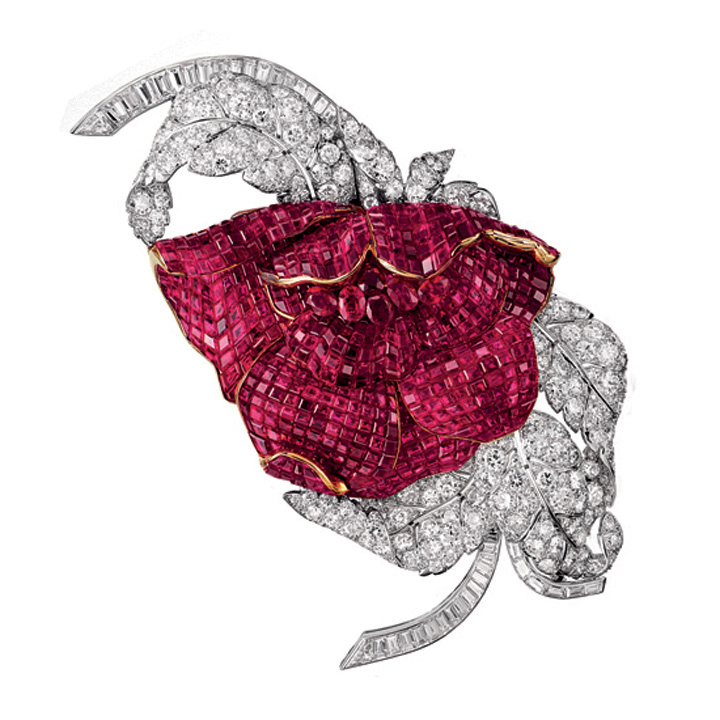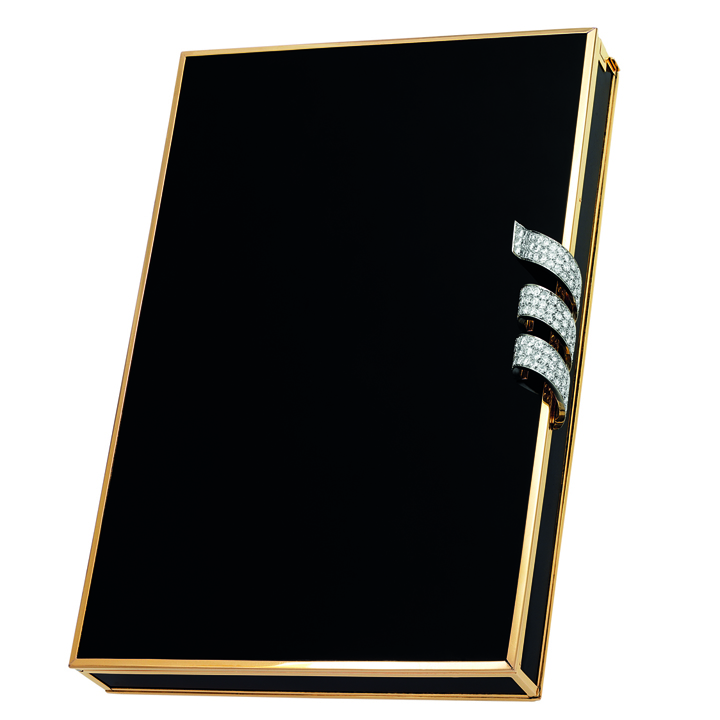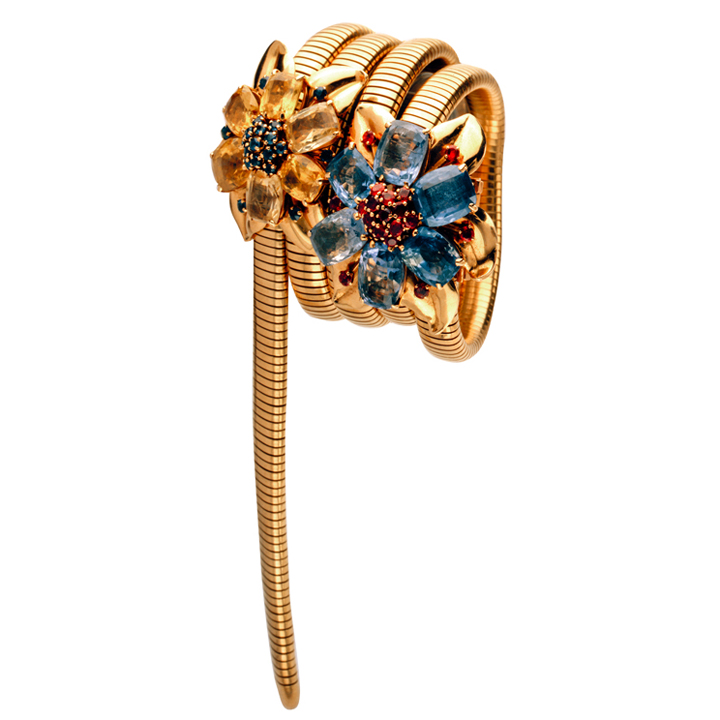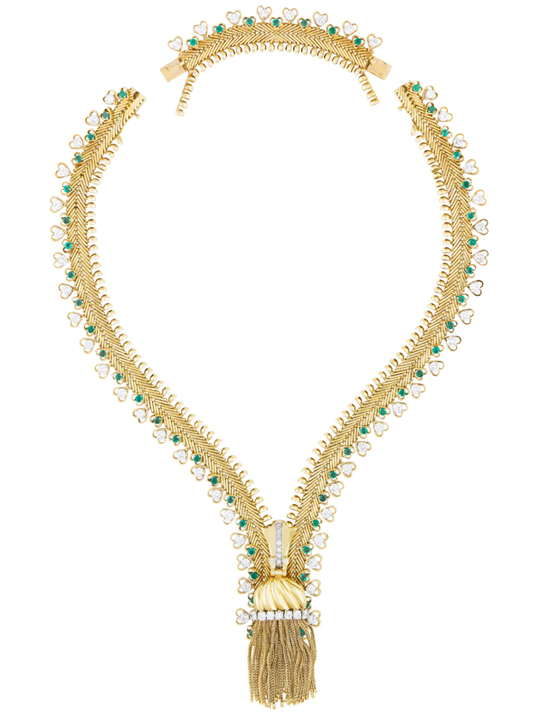Exhibition Review: Van Cleef & Arpels at the Bowers Museum
November 20, 2013

“A Quest for Beauty: The Art of Van Cleef & Arpels”
The Bowers Museum of Cultural Art in Santa Ana, CaliforniaThrough Feb. 15, 2014
This multifaceted exhibit, which debuted at the Bowers Museum Oct. 27, features more than 200 jewels and fashion accessories, as well as design sketches and archival photos of celebrities and royalty wearing some of the finest jewelry ever assembled.
According to Tim Adams, the Bowers’ curatorial consultant of decorative arts, the exhibit was more than ten years in the making. The pieces are from the archival Van Cleef & Arpels Collection, which the company has assembled through auction purchases for preservation.
The exhibit begins with the 1895 wedding of Alfred Van Cleef and Estelle Arpels. Clusters of photos in the foyer show the founders, the company’s first shop on Place Vendôme in Paris, and boutique openings in fashion capitals across the world. A floor-to-ceiling timeline lists important milestones from 1895 to the present day.
These images show pieces from the exhibit, "A Quest for Beauty: The Art of Van Cleef & Arpels."
Set to soft 1930s jazz, the exhibit follows a series of four defining themes: Nature, Elegance, Exoticism and Feminism. “Nature” examines the unique flora and fauna motifs that have influenced much of the Parisian jeweler’s artistry. The Peony brooch featuring 700 Burmese rubies demonstrates the innovative Mystery Setting, patented in 1933. With this signature design, grooves cut underneath the gemstones allow them to slide along rails, concealing the metal mountings.As Adams points out, “They lose half the rubies they work with in a Mystery Setting. First they have to find all the rubies that match in color, then calibrate-cut each one. When you slide and snap the rubies into place, they tend to break. You lose three-quarters of the emeralds. It can take one or two years to complete one of these pieces.”
The “Elegance” theme is epitomized by the Minaudière line of Art Deco vanity cases. Accented with platinum, gold and diamond, the black lacquer case’s compartments hold the essentials of a 1930s woman: mirror, lipstick, powder, cigarettes and dance cards. This themed section also features yellow gold and platinum pieces with the luxurious feel of fabric, including lace clips and the distinctive Zip necklace. Since its debut in 1951, this V-shaped zipper necklace has been one of the company’s iconic designs.
“Exoticism” brings to life Van Cleef & Arpels’ fascination with faraway cultures, which began during the Egyptian revival of the 1920s. On display are baroque Indian motifs and Chinese-inspired pieces such as the black and red enamel Dragon clip. The “hippie” era of the 1960s and ’70s saw the return of exotic elements in the jeweler’s designs.
At the heart of “Femininity” are weddings and coronations. These include the wedding set of Princess Grace Kelly of Monaco and a replica of the 1967 coronation crown of Iran’s Empress Farah Pahlavi. (For political reasons, the original tiara could not be brought back to Paris.) Archival photos from the various estates complement this section, which also features pieces worn by socialite Barbara Hutton, opera diva Maria Callas and actress Elizabeth Taylor.
Adams notes that the use of LED lighting, rather than incandescent or halogen lighting, truly captures the beauty of the gemstones on display.
A final section is dedicated to Van Cleef & Arpels’ extraordinary craftsmanship. Each piece is created entirely by hand, using sketches and old-fashioned tools. Visitors can view panels dedicated to every painstaking step of the jewelry-making process, or sit down to a screening of “Les Mains d’Or,” a collection of nine short films offering a rare glimpse inside the storied Place Vendôme workshops.
From the Bowers Museum, “A Quest for Beauty” will travel to the Houston Museum of Natural Science in 2014 and the Art Institute of Chicago the following year.
About the Author
Stuart Overlin is editor of Gems & Gemology in Carlsbad, California.







.jpg)


